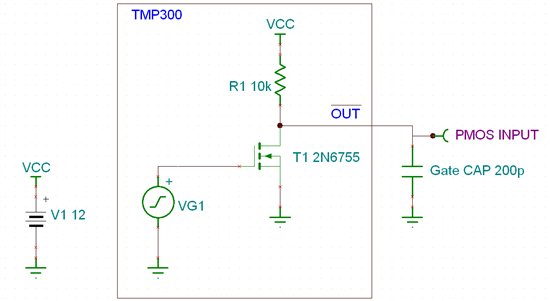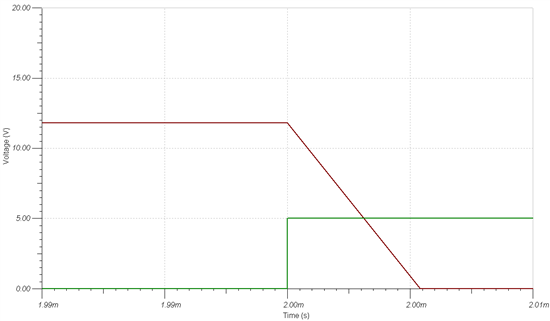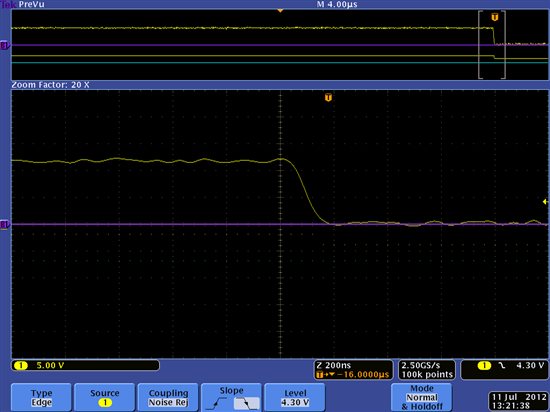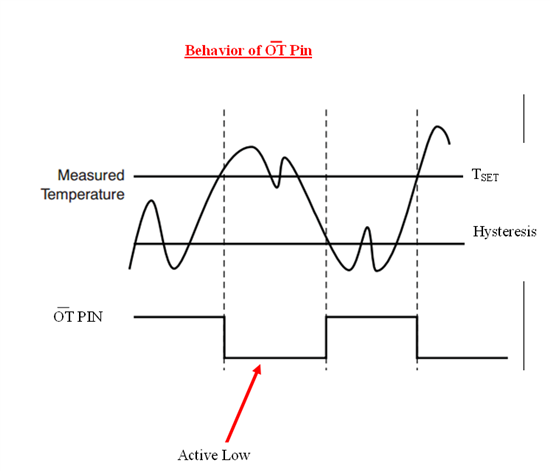Hello
We have used TMP300 temperature switch.
We are tested the device and have some technical issue. We need to set temperature threshold @ -20 deg cel to make heater ON.
For testing we set temperature to 18 to 25 deg cel using Rset resistor. According to data sheet and our understanding out# (pin 3) should go low (sharp falling) once set temperature is reached. But what we found is falling high to low is very slow, just like some analog signal. For your reference I have attached the schematic used for testing.
Kindly suggest if it is correct or any modification required in it.
We need this temperature switch to control the heater ON/OFF. Whether this chip is suitable for such application or you have better solution.
Again, can this chip able to drive PMOS with Imax of 3A.
Kindly clarify.








